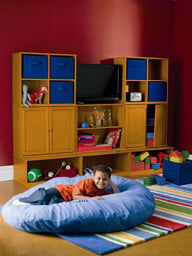Building Green is a Material Matter
But homeowners can live green without noticing much more than lower costs. Low-flow toilets and sinks, high-performance showerheads, and energy-efficient light bulbs can all reduce homes' eco-footprints without negatively impacting homeowners.
Building materials impact homes' sustainability. Bamboo flooring provides the same look and feel as wood, but proves a highly-renewable resource.
When choosing an eco-friendly exterior, builders should consider materials' aesthetics, durability, insulation and wood-use.
Concrete masonry proves an earth-friendly choice. Masonry can mimic the look and feel of older building materials, like worn stone, so concrete homes can blend into any neighborhood. Concrete contains natural and recycled materials.
Additionally, concrete masonry:
- Does not use any wood.
- Resists fire.
- Stands up to weather and age with little maintenance.
- Requires less insulation than wood-frame buildings.
Using concrete masonry, far from inconveniencing owners, creates a healthier home. It helps regulate heat, so homeowners will no longer feel outdoor temperature swings and in many areas, concrete does not need to be insulated, improving indoor air quality.
Owners do not need to paint concrete homes, thus reducing their exposure to harmful, paint-based chemicals. More people are reporting allergies than ever before, but concrete masonry helps resist dust, mold and insect infestations -; some of the major sources of indoor allergies.
Concrete masonry also blocks sound, making it an ideal urban building material. Concrete can even be used in landscaping to block road noise, stabilize uneven ground and control water flow.
Concrete masonry is both sustainable and affordable, proving that it can be easy and painless to go green if you have the right resources. For more information visit www.ncma.org.






No comments: